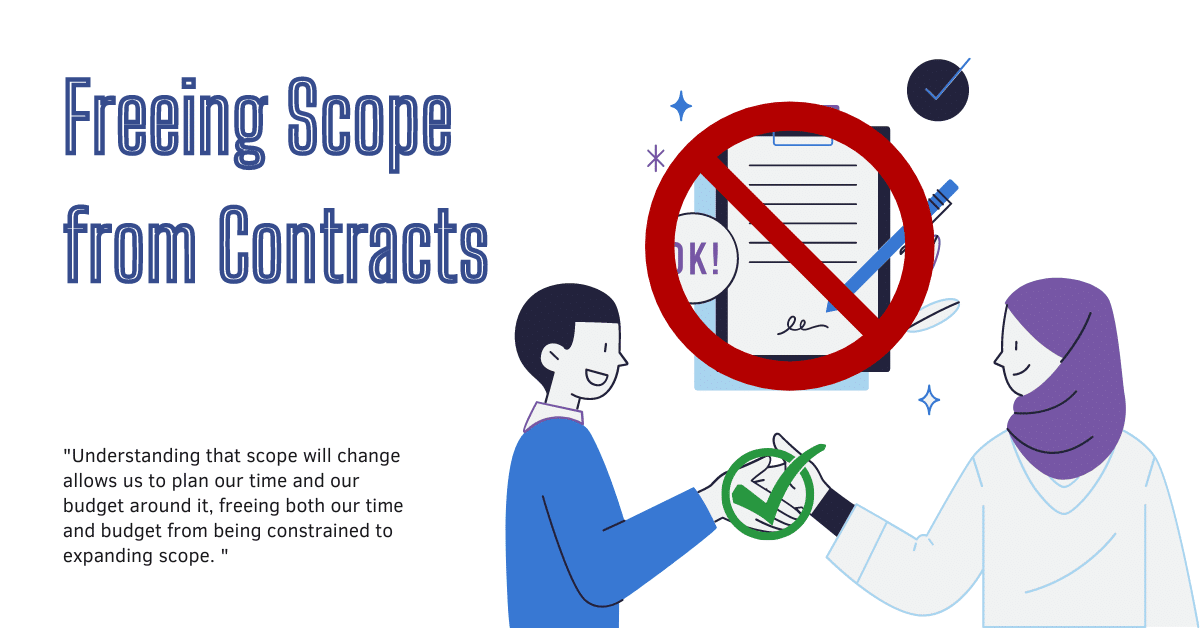Traditional contracts sought to capture all project aspects comprehensively. They defined project scope, included detailed business documentation, and outlined deliverables. Yet, such contracts often became outdated as projects progressed, leading to increased costs and cumbersome change control processes. The dynamic nature of the industry demands a more flexible approach.
In traditional project management, there is a concept called the triple constraint which consists of 3 points: scope, time, and budget. The accepted inevitability is that if you change one point, you must change at least one of the others. As an example, if you increase your scope, you must increase your budget or time, or perhaps both. Increasing scope becomes a cumbersome task, as contracts must be renegotiated with customers to reflect the changes made. This puts an obvious strain on making swift changes, which as we know the development world depends on.
Where traditional methods treat scope like a constraint, Agile treats scope as a variable. We typically start with a defined budget and time frame, and a minimum set of requirements to be delivered over that time frame. We accept that scope will change, as business or technology conditions change. Understanding that scope will change allows us to plan our time and our budget around it, freeing both our time and budget from being constrained to expanding scope. Rather than use our contracts to rigidly define scope, we invite a member of our customers team to keep scope focused on the business’s current needs.
The Agile mindset, expressed through frameworks such as Scrum or Kanban, prioritize customer collaboration throughout development. Instead of relying solely on contracts, Agile teams actively involve the customer as an essential part of the development team. This collaborative approach enables swift changes and fosters a dynamic relationship between the development team and the customer.
Contracts still serve as a vital starting point to establish the scope of work and estimated timeframes. They provide a framework for understanding expectations and responsibilities. However, Agile recognizes that contracts rarely reflect the project’s reality over time. Constant negotiation and flexibility are encouraged to adapt to evolving needs. Agile teams understand that requirements evolve as the customer gains deeper insights into their needs. By prioritizing customer collaboration and open communication, Agile teams can promptly respond to changing requirements, ensuring that the final product aligns with evolving expectations.



